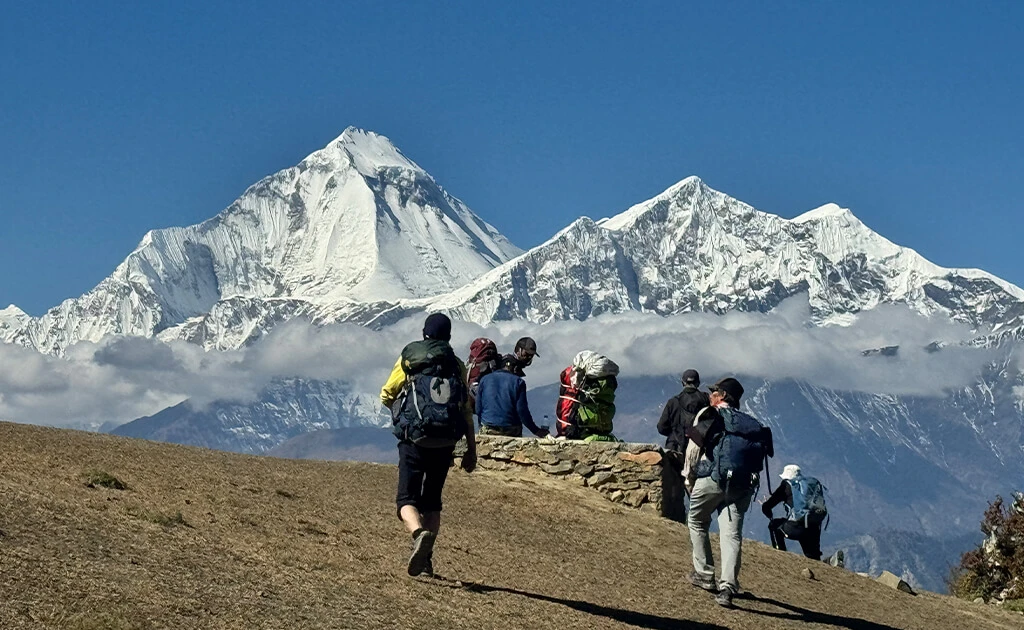The Upper Mustang Trek takes you to the hidden kingdom of Lo, a remote and fascinating region near the Tibetan border. The trail to Upper Mustang was opened for trekking in 1992. Remoteness and the rugged landscapes with century-old monasteries, Tibetan Cultures, and trans-Himalayas make this trek special among travellers. This 15-day Upper Mustang Trek is a delightful walk with incredible scenery of landscapes and panoramic views of mountains such as Dhaulagiri, Nilgiri, Annapurna Ranges, and many others. Upper Mustang Trekking begins with the exciting fight from Pokhara to Jomsom. The flight delivers exotic views of the mountains from the air. After landing at Jomsom, the trek starts at Kagbeni and continues through Chele, Syangmoche, Ghami, and Lo Manthang. Likewise, after discovering Lho the trek goes passing Dhakmar, Ghiling, and Chuksang and ends at Jomsom. Between this start and the end of the trek, you will get to see caves, rock paintings, monasteries, gompas, and mountain views. Likewise, visit an ancient popular Ghar Gompa, which is over 1200 years old. Trek to the Mustang region is a perfect way to discover the magical and remote part of Nepal. Experience the traditional culture and lifestyle of a Tibetan-influenced community. People of this community follow the Buddhist religion, which allows you to get close to Buddhist culture.
Iconic Holiday Nepal assures you of making your visit to Mustang with remarkable experience and adventure. Our professional trekking guides and staff have local insights and have good experience in this trekking trail. Likewise, we can make a flexible Upper Mustang Trek Itinerary that is ideal for our clients.
The Secrets of Upper Mustang
Cultural Wonders and Scenic Beauty of Upper Mustang
Known for its breathtaking desert terrain and rich Buddhist traditions, Upper Mustang is home to monasteries, cave dwellings, and ancient villages. The region’s festivals, warm locals, and spiritual energy make it a rare cultural treasure in the Himalayas.
Tiji Festival – A Celebration of Peace and Tradition
Held every May in Lo Manthang, the Tiji Festival symbolizes the triumph of good over evil. Locals dressed in vibrant robes join monks performing sacred masked dances, prayers, and rituals. It’s one of the most captivating cultural experiences in the Himalayas.
Life and Culture in Upper Mustang
The people of Upper Mustang live in harmony with nature, preserving centuries-old Tibetan traditions. Horse racing, ancient monasteries, and the hospitality of the Lopa and Thakali people give every traveler a glimpse into an authentic Himalayan lifestyle.
Wildlife and Landscape of Upper Mustang
Despite its barren beauty, Upper Mustang shelters rare wildlife like blue sheep, snow leopards, and Himalayan vultures within the Annapurna Conservation Area. The region’s wind-carved cliffs, deep gorges, and panoramic views of Dhaulagiri and Annapurna create a surreal trekking experience.
